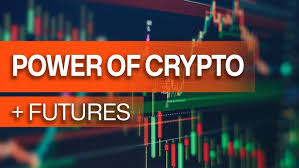
What is P2P Trading in the Modern Financial Ecosystem?
P2P (peer-to-peer) trading refers to a decentralized form of trading that allows individuals to trade directly with one another without an intermediary. This system has gained immense popularity, particularly in the cryptocurrency market. what is p2p trading in crypto visit website P2P trading platforms facilitate these transactions, enabling users to buy, sell, and exchange assets directly between themselves. As we delve into the intricacies of P2P trading, it is essential to understand its core principles, benefits, and potential risks associated with this trading paradigm.
The Fundamentals of P2P Trading
P2P trading can be traced back to traditional barter systems, where goods and services were exchanged directly between individuals. In modern finance, this concept has evolved with the rise of technology and the internet, leading to the development of various P2P platforms and solutions. In the cryptocurrency realm, P2P trading enables users to transact with digital assets like Bitcoin, Ethereum, and other altcoins without the need for a centralized exchange.
How P2P Trading Works
The mechanics of P2P trading involve a straightforward process. Users must register on a P2P trading platform and create a profile that outlines their trading preferences. Once registered, they can browse available offers or create a listing for their own assets. The platform typically includes an escrow service that temporarily holds the asset until both parties fulfill their obligations, which often include the transfer of funds.
Upon finding a suitable trading partner, users can negotiate terms, including exchange rates, payment methods, and additional conditions. Once an agreement is reached, the trade is executed, and the escrow service releases the assets to the buyer after confirming that payment has been made. This decentralized approach fosters trust between traders, as they can trade directly with one another.
Advantages of P2P Trading
P2P trading offers numerous benefits that contribute to its growing popularity. Here are some of the most notable advantages:
1. **Lower Fees and Costs**
Unlike traditional exchanges that charge high fees for trading, P2P trading platforms generally have lower or no fees. This makes it an attractive option for traders looking to maximize their profits.
2. **Enhanced Privacy**
P2P trading provides greater privacy, as users can trade without needing to disclose personal information often required by centralized exchanges. This feature allows users to maintain a level of anonymity while trading.
3. **Flexibility in Payment Methods**
P2P platforms enable users to choose from a variety of payment methods. Whether it’s bank transfers, digital wallets, or even cash, traders can easily find a payment option that suits their needs.
4. **Global Accessibility**
P2P trading is not confined by geographical boundaries. Anyone with internet access can engage in trading, making it an inclusive and global marketplace for all users.
Risks Associated with P2P Trading

While P2P trading has its advantages, it is not without risks. Understanding these risks is vital for anyone considering entering the P2P trading space:
1. **Fraud and Scams**
The decentralization of P2P trading can make it susceptible to fraudulent activities. Some users may misrepresent themselves or their offers, leading to potential losses for unsuspecting traders. It’s essential to conduct due diligence and verify the credibility of trading partners before executing trades.
2. **Lack of Regulation**
P2P trading typically operates outside traditional financial regulations, which can expose traders to risks. This lack of oversight means there are fewer protections in place for traders compared to centralized exchanges.
3. **Volatility**
The cryptocurrency market is known for its volatility, which can affect P2P trading prices. Traders must be familiar with market trends and fluctuations to mitigate potential losses.
Best Practices for Safe P2P Trading
Engaging in P2P trading requires vigilance and a proactive approach to safety. Here are some best practices for successful P2P trading:
1. **Research and Due Diligence**
Always research potential trading partners. Look for reviews, ratings, and feedback from previous trades to assess whether they are reliable and trustworthy.
2. **Use Escrow Services**
Utilize the escrow services provided by P2P platforms to secure funds and assets during transactions. Escrow ensures that assets are only released once the agreed-upon conditions are met, providing an extra layer of security.
3. **Confirm Payment Before Releasing Assets**
Never release your assets until you have confirmed that payment has been received and verified. This precaution can prevent potential scams and losses.
4. **Stay Informed About Market Trends**
Keep up with the latest market trends and news. This knowledge can help you make informed trading decisions and avoid sudden market downturns.
Conclusion
P2P trading represents a significant evolution in the world of finance, allowing for a more decentralized and user-driven approach to trading assets. With its myriad advantages, it presents a compelling alternative to centralized exchanges, drawing in a diverse range of users. However, like any trading method, it comes with its own set of challenges and risks. By understanding what P2P trading is and adopting best practices, traders can navigate this growing landscape safely and effectively.




